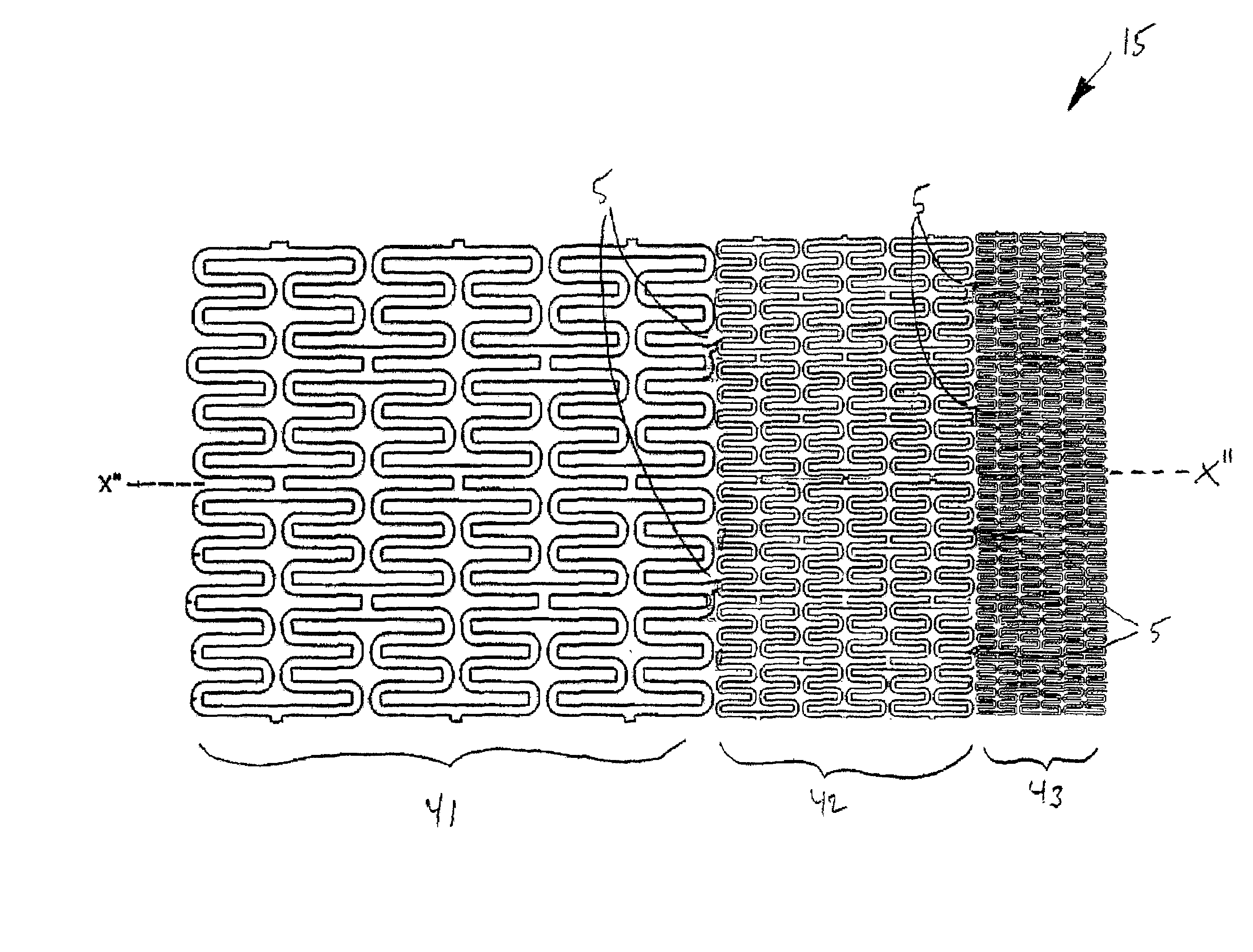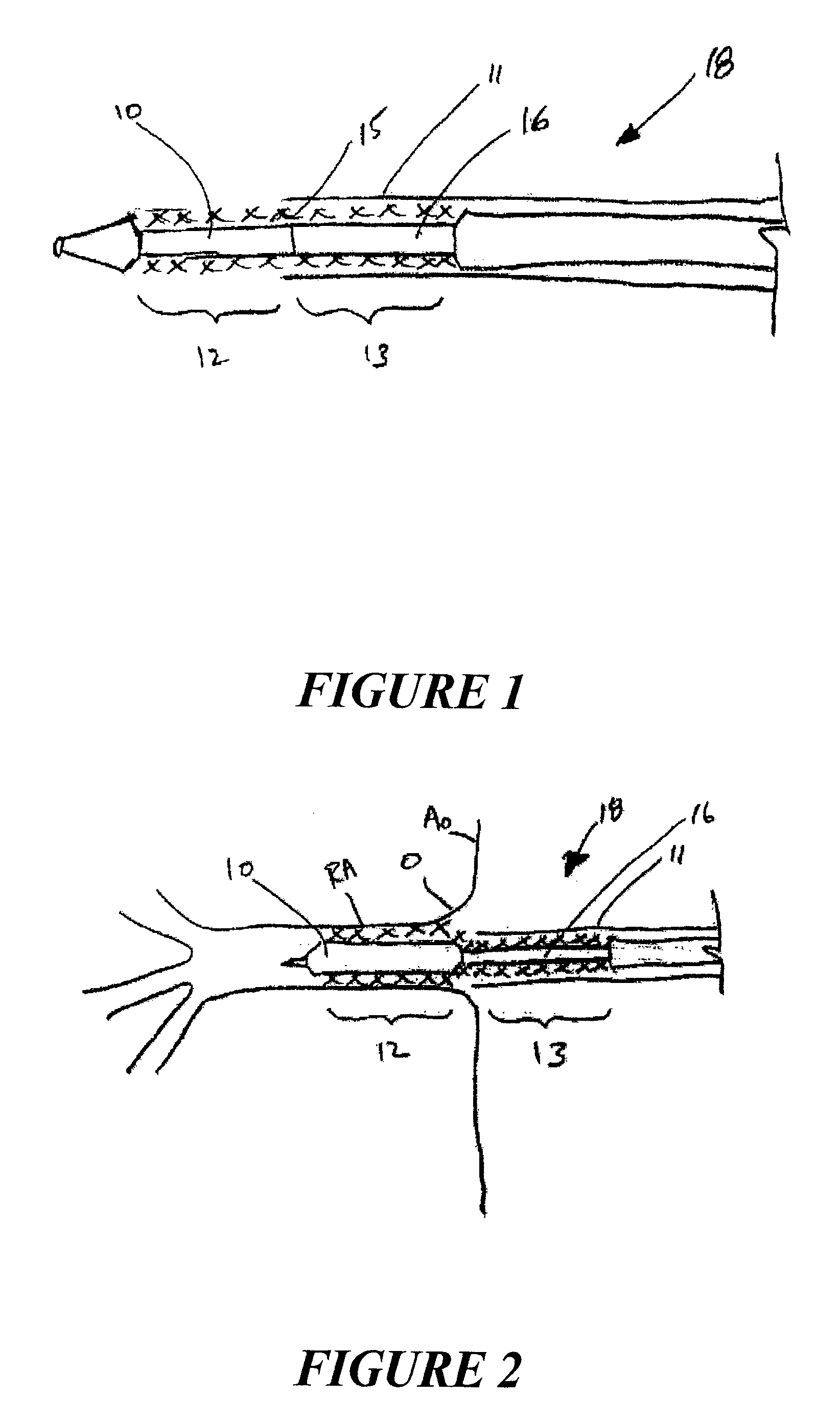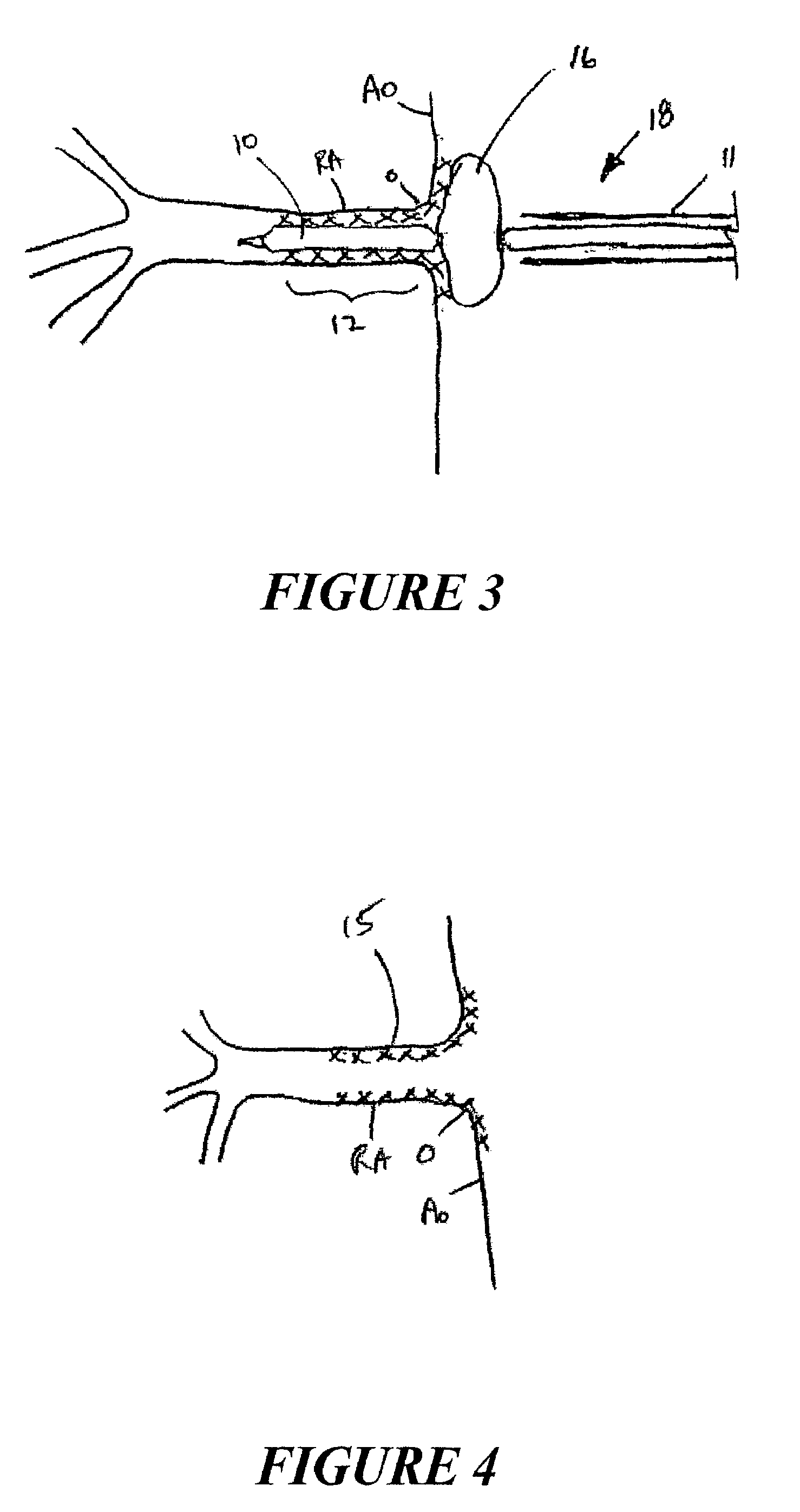Stent and stent delivery system for ostial locations in a conduit
a technology of ostial location and stent delivery system, which is applied in the field ofluminal implants, can solve the problems of releasing arteriosclerosis debris from the treatment area, difficult positioning of stents, and specific challenges of selected segments of human vasculature, and achieves superior radial strength, prolonging the service life, and maintaining the dilated diameter of the renal vessel.
- Summary
- Abstract
- Description
- Claims
- Application Information
AI Technical Summary
Benefits of technology
Problems solved by technology
Method used
Image
Examples
Embodiment Construction
[0028]FIG. 1 illustrates a stent 15 in accordance with the present invention. Stent 15 comprises a balloon expandable stent segment 12 and a self expanding stent segment 13. Balloon expandable stent segment 12 may comprise stainless steel alloys, cobalt chrome alloys, titanium, tantalum, platinum, gold, or other materials or their alloys as are known in the art. The self expanding stent segment 13 may be comprise high elastic limit materials such as Elgiloy, cobalt chrome alloys, or other materials as are known in the art. The self expanding stent may comprise so-called shape-memory metals such as nitinol. Shape-memory metal stents can self-expand when thermo mechanically processed to exhibit superelastic material properties. Such shape-memory stents can also self-expand through use of a pre-programmed shape memory effect. Stents processed to exhibit a shape memory effect experience a phase change at the elevated temperature of the human body. The phase change results in expansion o...
PUM
 Login to View More
Login to View More Abstract
Description
Claims
Application Information
 Login to View More
Login to View More - R&D
- Intellectual Property
- Life Sciences
- Materials
- Tech Scout
- Unparalleled Data Quality
- Higher Quality Content
- 60% Fewer Hallucinations
Browse by: Latest US Patents, China's latest patents, Technical Efficacy Thesaurus, Application Domain, Technology Topic, Popular Technical Reports.
© 2025 PatSnap. All rights reserved.Legal|Privacy policy|Modern Slavery Act Transparency Statement|Sitemap|About US| Contact US: help@patsnap.com



